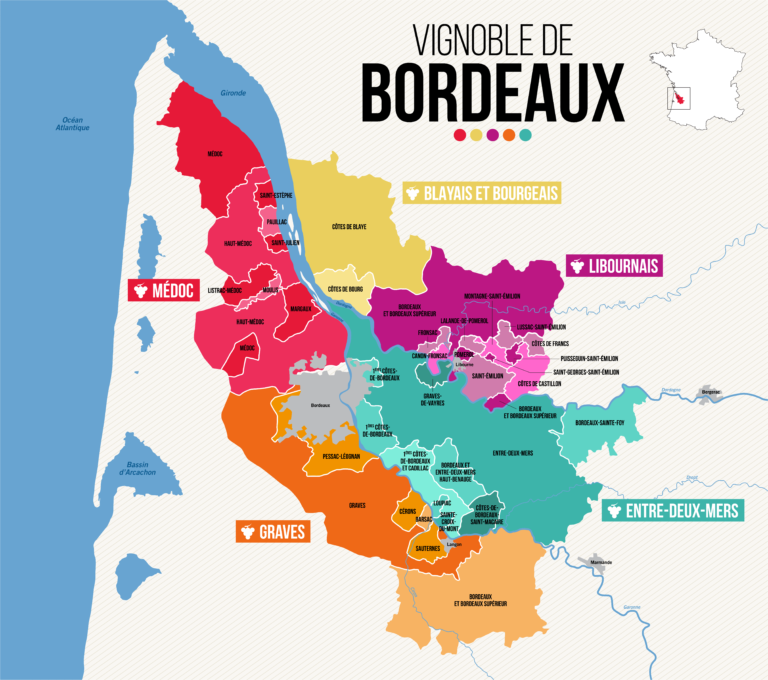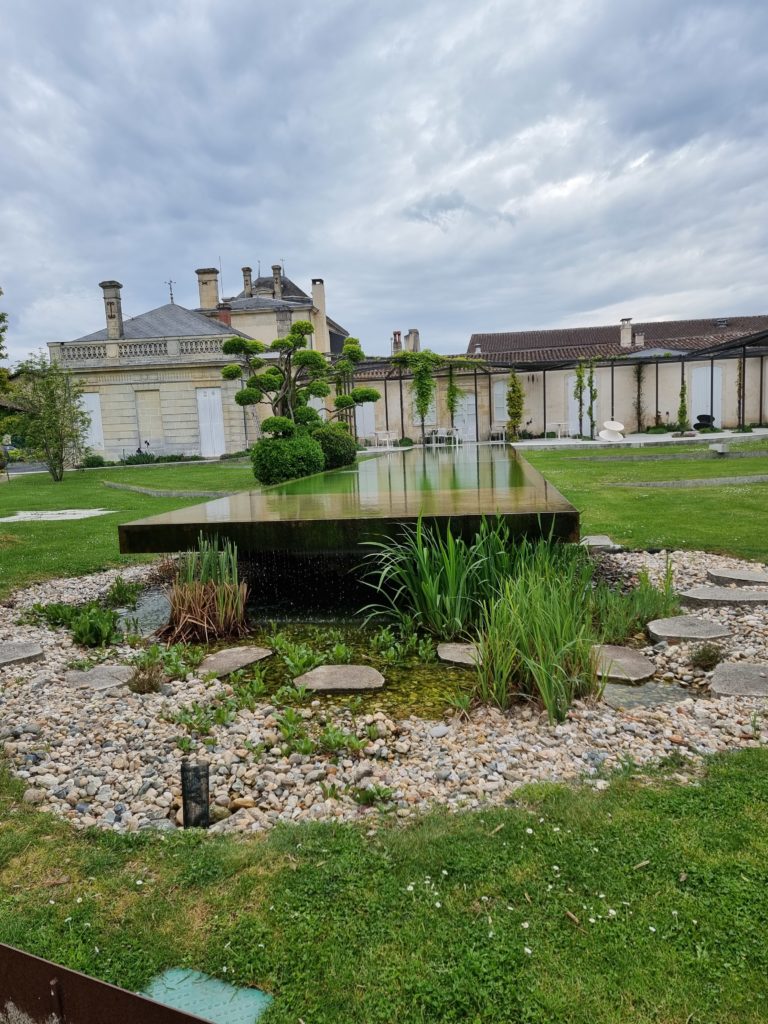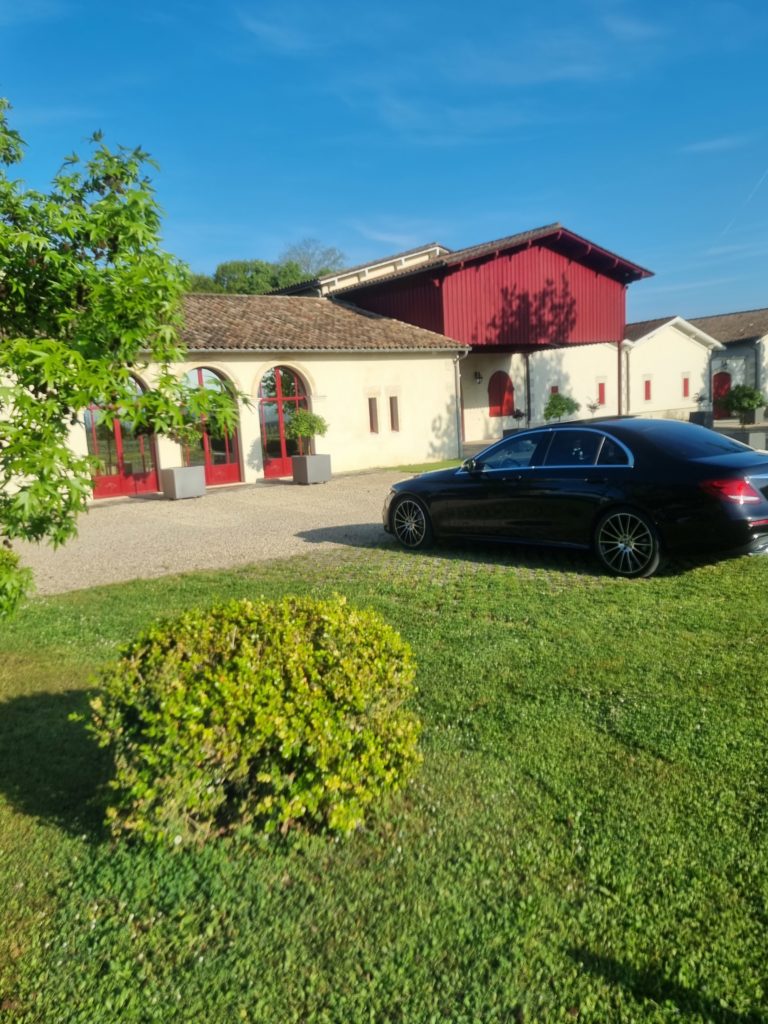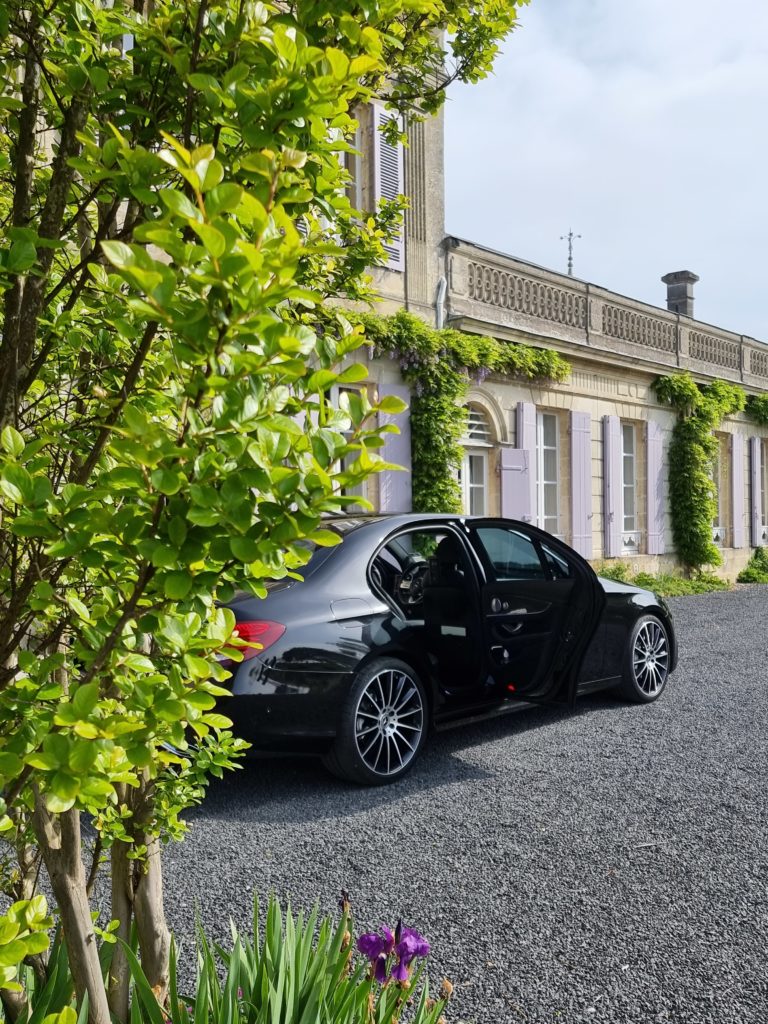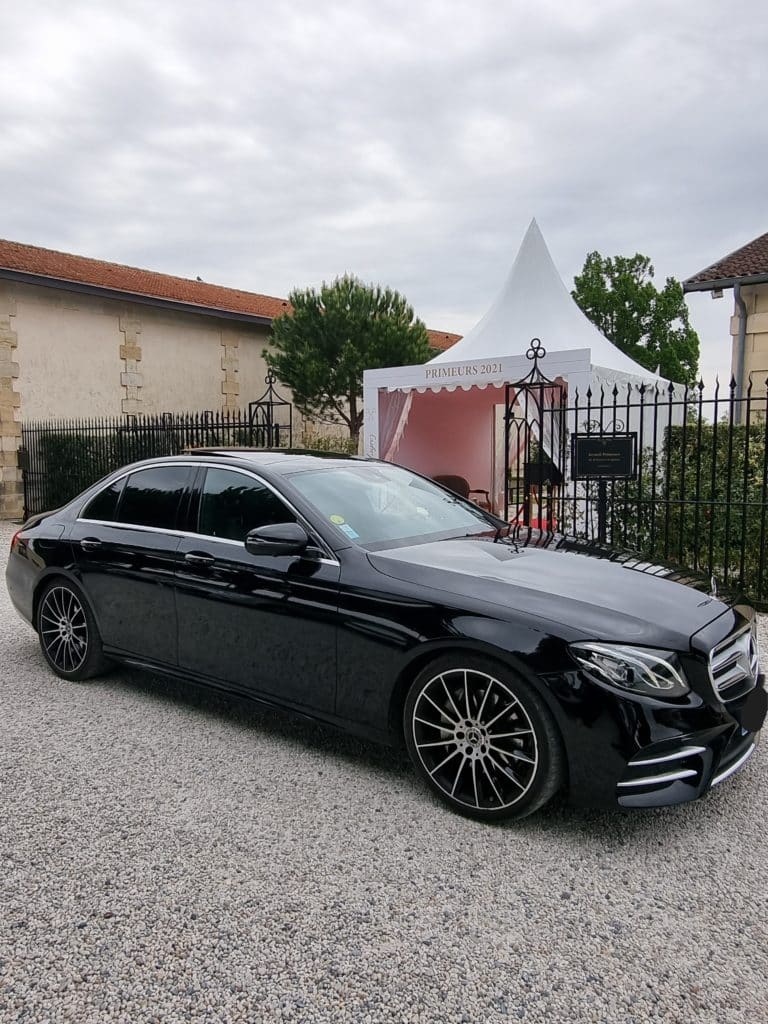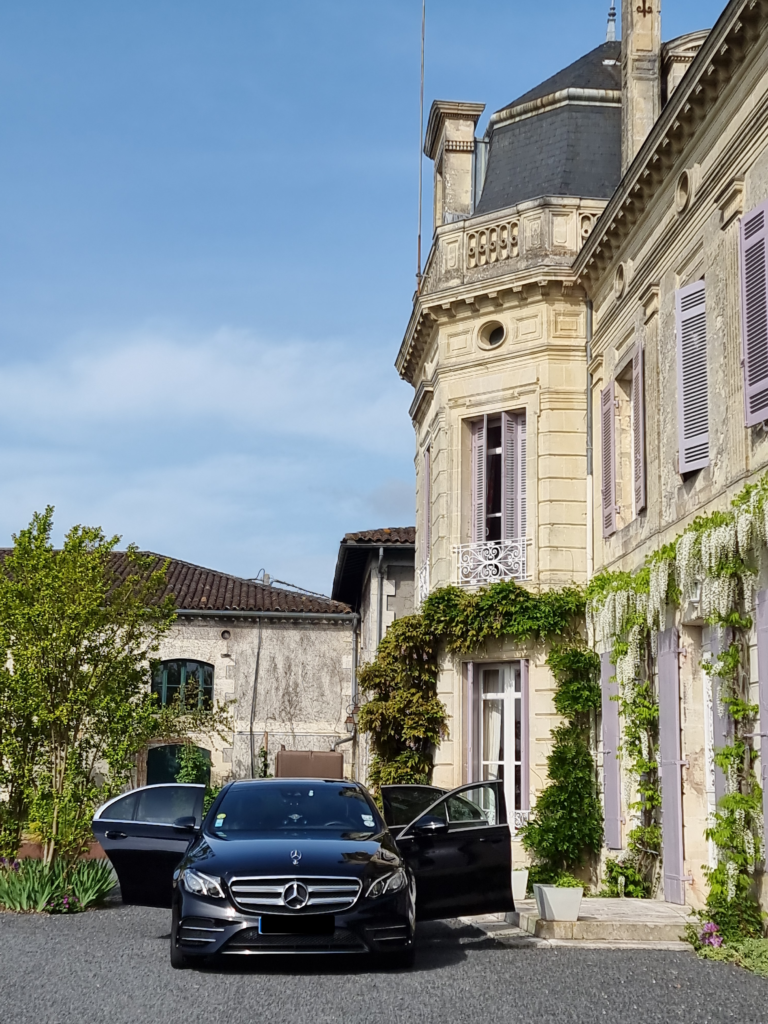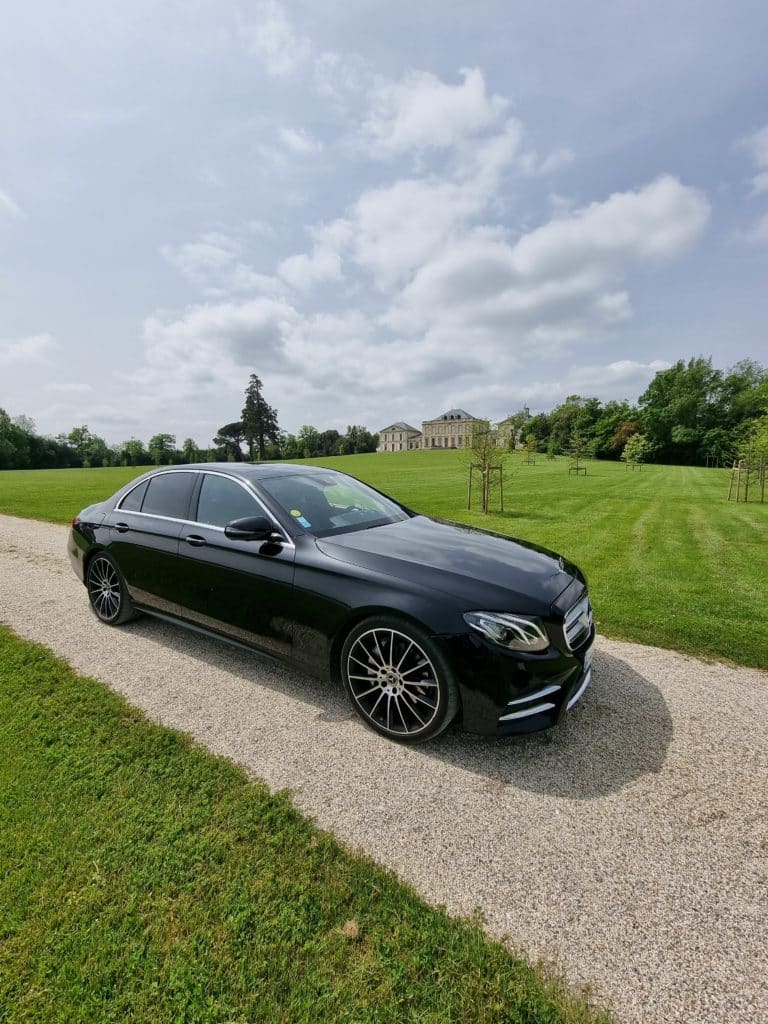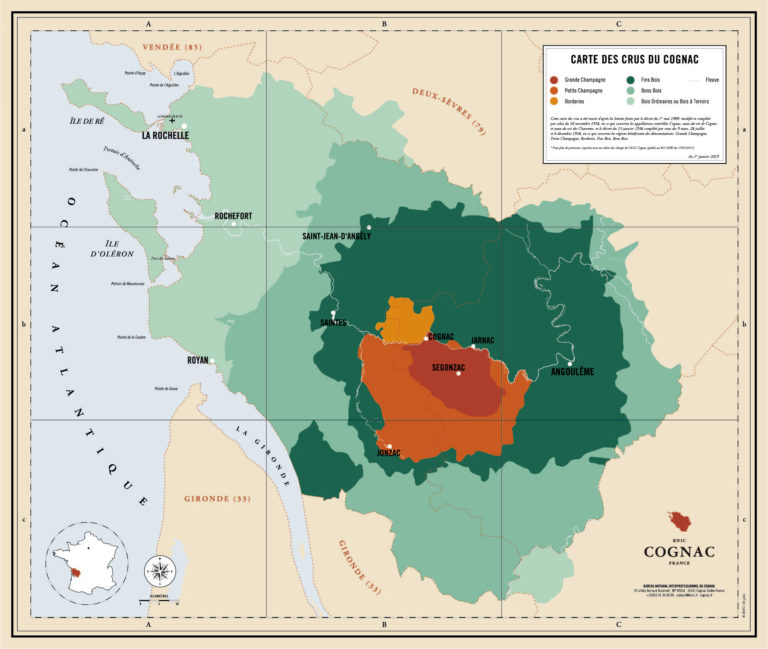Your wine routes
Entrust us with your wine tours
Whether you want to visit a prestigious estate and taste a grand cru or discover a more confidential wine but sublimated by the work of the vines and the cellar, our drivers take you from the polders of the Médoc to the clay-limestone plateaus of Entre-Deux-Mers, from the misty banks of the Ciron to the landscapes of Saint-Emilion, from Cognac to Bergerac.
Our services are particularly suited to wine tours for vineyard and wine professionals and to all those passionate about viticulture and oenology.
Our support is à la carte. Our customers define their oenological circuit, the number of visits and tastings desired and the rhythm of the day. Our service adapts to it.
Do you want to discover another vineyard? Contact us.
Bordeaux vineyard
The Bordeaux vineyard has existed since Gallo-Roman antiquity. The first plantings were made in the first century of our era by the Celtic tribe of Bituriges Vivisques. The first Vitis Biturica vines, ancestor of our Cabernets today, are appearing along the Garonne.
As with all other human activities, the cultivation of the vine has shaped the natural landscapes and habitats of the Gironde department, its local economy and its trade, served by the presence of sea and river routes.
Bordeaux wines come from prestigious appellations of international renown. Who has not at least once in their life heard of the prestigious wines of Médoc, those of Saint-Emilion, Pomerol or Sauternes?
At their side coexist two lesser-known terroirs, but whose winegrowers produce good wines thanks to their know-how and their commitment.
Thus, the Bourg vineyard stretches over the limestone plateau overlooking the Gironde estuary. Less well-known than the Médoc which faces it, it nevertheless produces wines of good quality. The Bourg et Côtes-de-Bourg appellation offers red wines and dry white wines with a beautiful light color, pleasant on the palate. Discovering the wines of Bourg is essential both for their quality and for the charming landscapes of this terroir.
The Latin expression inter duo maria gave its name of Entre-Deux-Mers to the Girondine region located between Dordogne and Garonne. This region produces red wines under the names of “Bordeaux” and “Bordeaux Supérieur”, rosé wines and dry white wines. These are the only white Secs wines with controlled designation of origin (AOC) from Gironde.
If the red color is the most representative of Bordeaux wines, the Gironde vineyard produces rosé wines, clairet wines, dry whites, sweet whites and even Crémant de Bordeaux.
It goes perfectly with macaroons from Saint-Emilion.
Bergerac and Duras vineyards
What would Bergerac be without Cyrano, whose full-length statue proudly sits on the Place Pélissière? Saved from oblivion by the work of Edmond Rostand, the poet Hercule Savinien Cyrano de Bergerac nevertheless did exist.
The town of Bergerac is located in Purple Périgord, so named for the presence of a vineyard as old as its prestigious neighbors of Gironde.
Indeed, on the banks of the Dordogne and Drot as well as those of the Gironde, the first vines were planted from Gallo-Roman antiquity. Today, the wines of Bergerac and Duras come in seven appellations: Bergerac, Monbazillac, Montravel, Pécharmant, Rosette, Saussignac and Côtes de Duras.
Produced from Merlot, Cabernet Sauvignon, Cabernet Franc, Malbec, Sémillon, Muscadelle, Sauvignon, Chenin blanc and Ugni blanc, these wines take on five colors: sweet whites, soft whites, dry whites, rosé and red.
Country of bastides and castles, with its sometimes daring relief crossed by rivers, the economic activity of the regions of Bergerac and Duras is driven by tourism, viticulture and gastronomy.
Getting there is always synonymous with great gastronomic and oenological promises.
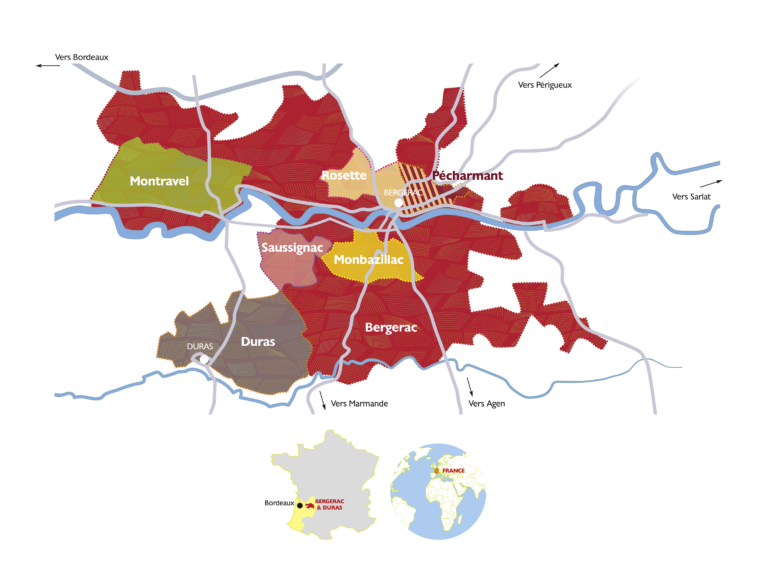
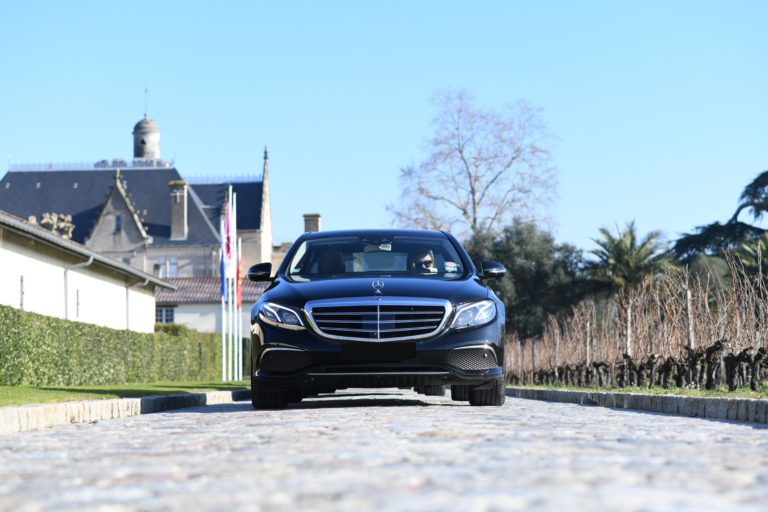
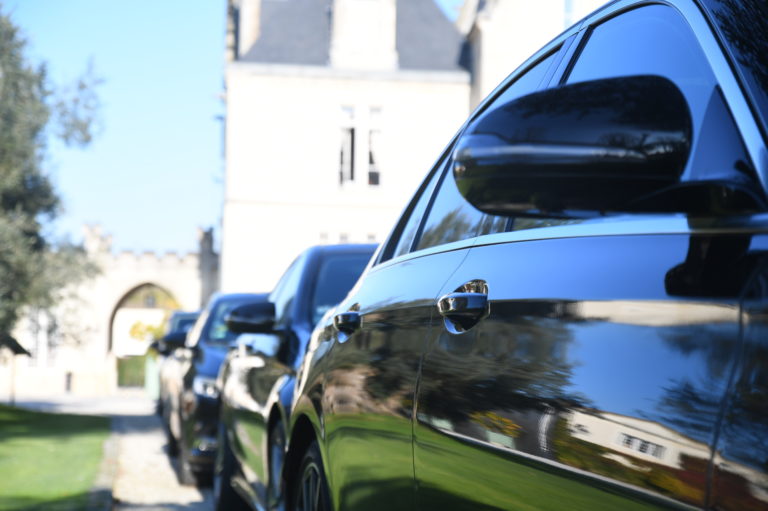

Cognac vineyard
The Cognac vineyard is closely linked to its famous brandy. However, would this alcohol have existed without the Dutch merchants?
In fact, in the Middle Ages, the economic activity of the town of Cognac was based on the salt and wine trade. But the latter does not keep well during long boat trips. The Dutch traders then use distillation to preserve it, a process that the Charentais will improve later by double-distillation and aging in oak barrels.
After the phylloxera crisis, the 20th century gradually led to the adoption of standards and rules to protect the appellation and guarantee quality criteria.
Today, the Cognac market is essentially external. A luxury product, it is exported to 160 countries, among which North America, Mexico and the Far East have the lion’s share.

